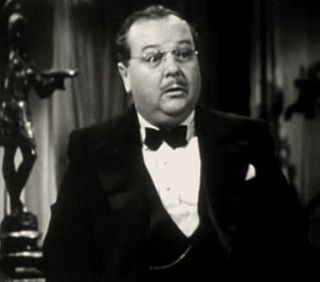
Lloyd Corrigan was an American film and television actor, producer, screenwriter, and director who began working in films in the 1920s. The son of actress Lillian Elliott, Corrigan directed films, usually mysteries such as Daughter of the Dragon starring Anna May Wong, before dedicating himself more to acting in 1938. His short La Cucaracha won an Academy Award in 1935.
Western lifestyle or cowboy culture is the lifestyle, or behaviorisms, of, and resulting from the influence of, the attitudes, ethics and history of the American Western cowboy. In the present day these influences affect this sector of the population's choice of recreation, clothing, and consumption of goods.

Jack Twist is a fictional character of the short story "Brokeback Mountain" by Annie Proulx and of the 2005 Academy Award-winning film adaptation of the same name directed by Ang Lee, where he is portrayed by American actor Jake Gyllenhaal. Jack's story is depicted by the complex sexual and romantic relationship he has with Ennis Del Mar in the American West from 1963 to 1983.
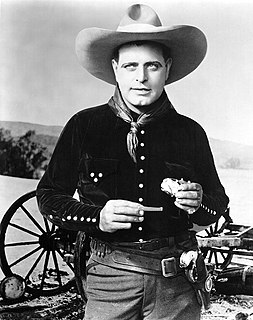
John Hartford Hoxie was an American rodeo performer and motion picture actor whose career was most prominent in the silent film era of the 1910s through the 1930s. Hoxie is best recalled for his roles in Westerns and rarely strayed from the genre.

Tumbleweeds is a 1925 American silent Western film starring and produced by William S. Hart. It depicts the Cherokee Strip land rush of 1893. The film is said to have influenced the Oscar-winning 1931 Western Cimarron, which also depicts the land rush. The 1939 Astor Pictures' re-release of Tumbleweeds includes an 8-minute introduction by the then 75-year-old Hart as he talks about his career and the "glories of the old west." Tumbleweeds was Hart's last movie.
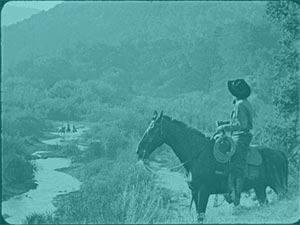
Bucking Broadway is a 1917 American silent Western film directed by John Ford, probably his sixth feature film. Long thought to be lost, along with about 60 of Ford's 70 silent films, it was found in 2002 in the archives of the CNC. It was subsequently restored and digitized and is available on the Criterion Blu-Ray of John Ford's Stagecoach.

Claude Duval Payton was an American actor in many silent films and other films.
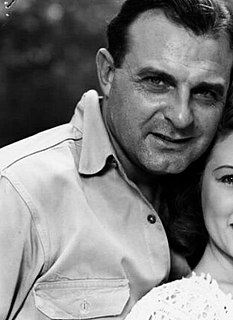
Ray "Crash" Corrigan was an American actor most famous for appearing in many B-Western movies. He also was a stuntman and frequently acted as silver screen gorillas using his own gorilla costumes.

Man to Man is a 1922 American silent Western film starring Harry Carey. It is not known whether the film currently survives.

Lillian Rose Rich Woodland, more commonly known as Lillian Rich was an English-born actress of the silent era. She appeared in more than 60 films between 1919 and 1940.

Thunderbolt Jack is a 1920 American silent Western film serial directed by Francis Ford and Murdock MacQuarrie, produced by Berwilla Film Corp., and released on the states-rights market by Arrow Film Corp. The serial is considered to be lost.
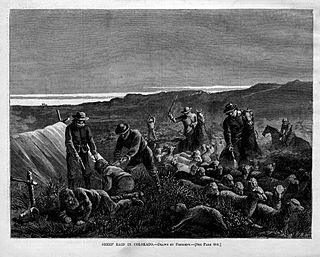
The Sheep Wars, or the Sheep and Cattle Wars, were a series of armed conflicts in the Western United States which were fought between sheepmen and cattlemen over grazing rights. Sheep wars occurred in many western states though they were most common in Texas, Arizona and the border region of Wyoming and Colorado. Generally, the cattlemen saw the sheepherders as invaders, who destroyed the public grazing lands, which they had to share on a first-come, first-served basis. Between 1870 and 1920, approximately 120 engagements occurred in eight different states or territories. At least 54 men were killed and some 50,000 to over 100,000 sheep were slaughtered.

Colorado Sunset is a 1939 American Western film directed by George Sherman and starring Gene Autry, Smiley Burnette, and June Storey. Written by Betty Burbridge and Stanley Roberts, based on a story by Luci Ward and Jack Natteford, the film is about a singing cowboy and his buddies who discover that the ranch they bought is really a dairy farm—and worse, it's subject to intimidation from a protection racket that prevents dairy products from safely reaching the market.

Gaucho Serenade is a 1940 American Western film directed by Frank McDonald and starring Gene Autry, Smiley Burnette, and June Storey. Written by Betty Burbridge and Bradford Ropes, the film is about a singing cowboy who goes up against a group of businessmen who plot to kidnap the son of a former partner so he won't testify against them.

Catch My Smoke is a 1922 American silent Western film directed by William Beaudine, based on the novel Shoe-bar Stratton by Joseph Bushnell Ames. It stars Tom Mix, Lillian Rich, and Claude Payton.

Jack and Jill is a 1917 American Western silent film directed by William Desmond Taylor and written by Gardner Hunting and Margaret Turnbull. The film stars Jack Pickford, Louise Huff, Leo Houck, Don Bailey, J.H. Holland, and Jack Hoxie. The film was released on November 12, 1917, by Paramount Pictures.
The Sign of the Cactus is a 1925 American silent Western film directed by Clifford Smith and starring Jack Hoxie, Helen Holmes, and J. Gordon Russell.

The White Outlaw is a 1925 American silent Western film directed by Clifford Smith and written by Isadore Bernstein. The film stars Jack Hoxie, Marceline Day, William Welsh, Duke R. Lee, Floyd Shackelford, and Charles Brinley. The film was released on September 6, 1925, by Universal Pictures.

Don Dare Devil is a 1925 American silent Western film directed by Clifford Smith and written by Wyndham Gittens. The film stars Jack Hoxie, Cathleen Calhoun, Duke R. Lee, William Welsh, Thomas G. Lingham, and Evelyn Sherman. The film was released on July 18, 1925, by Universal Pictures.

Bustin' Thru is a 1925 American silent Western film directed by Clifford Smith and starring Jack Hoxie, Helen Lynch and William Bailey.


















